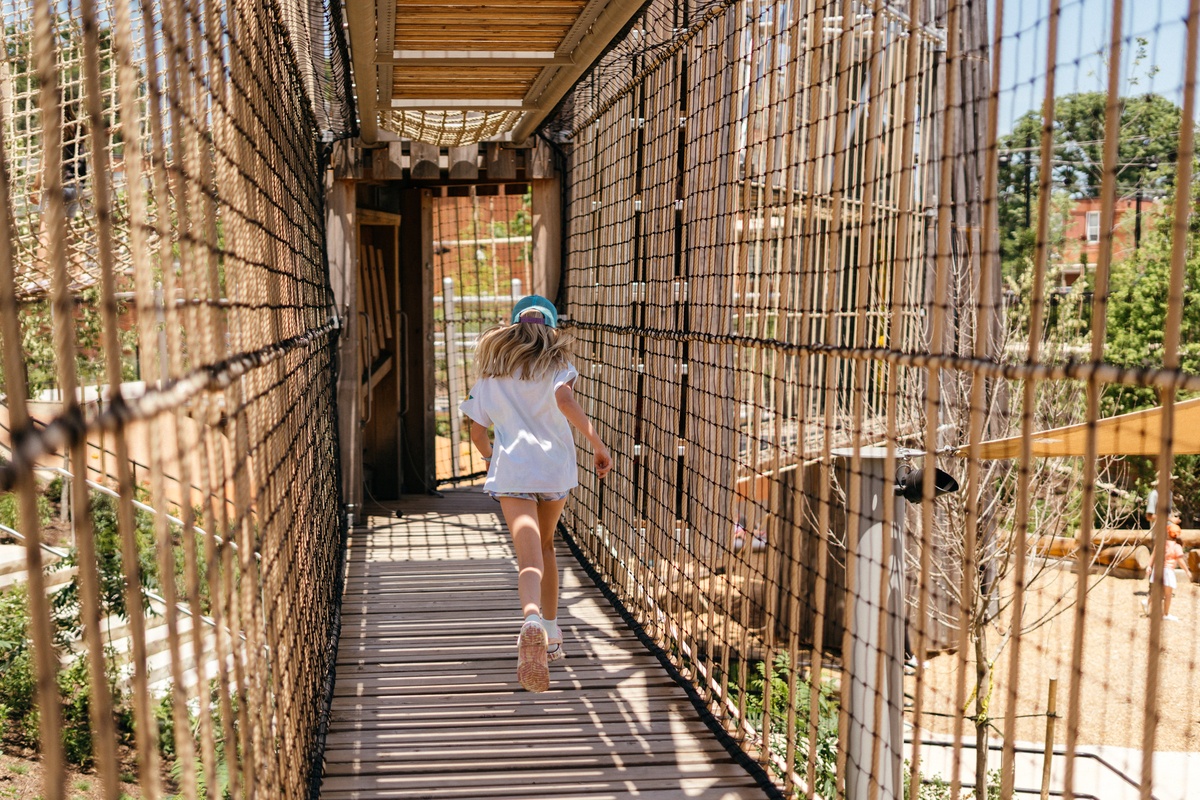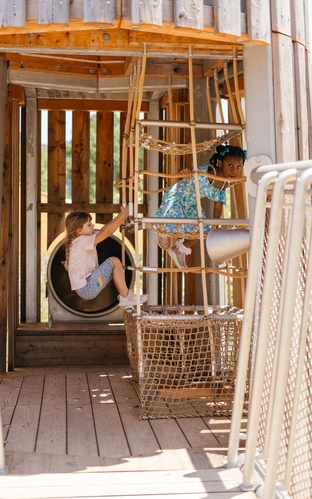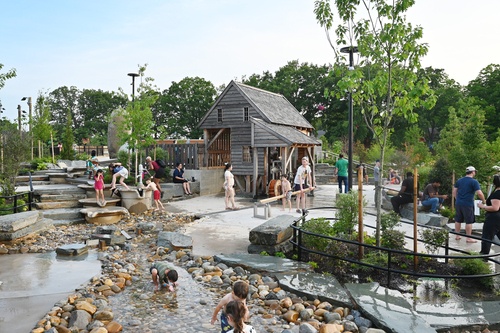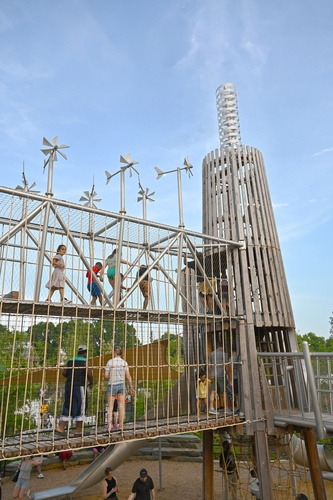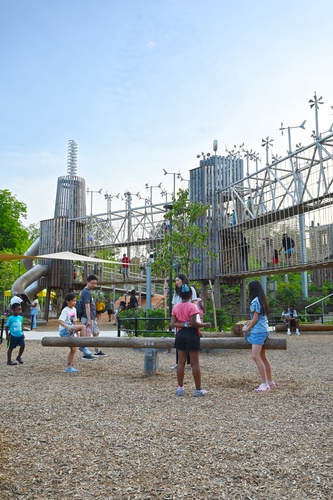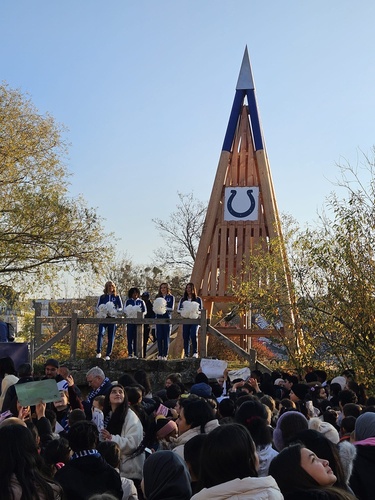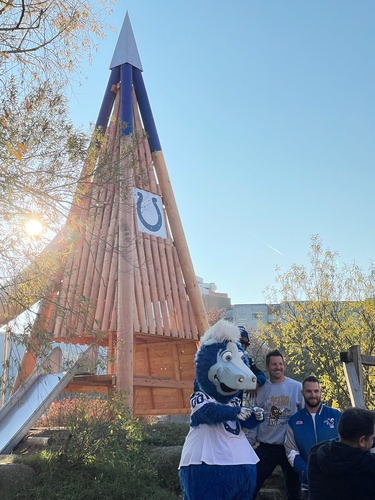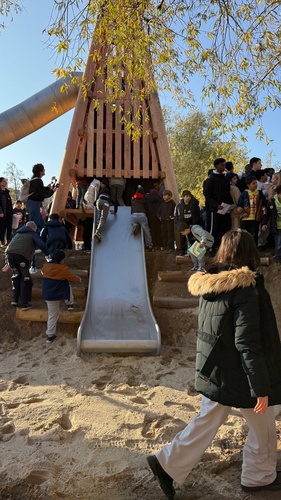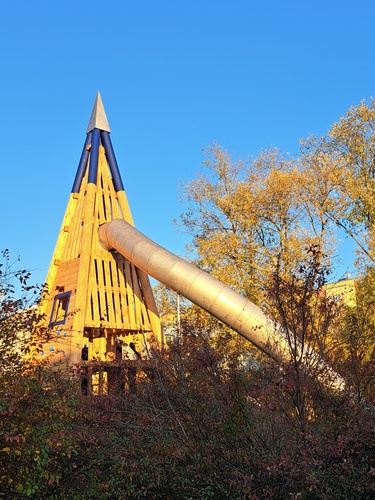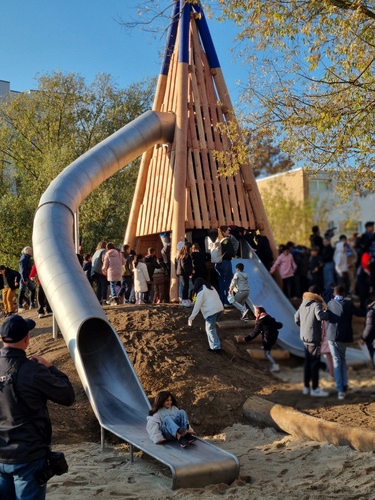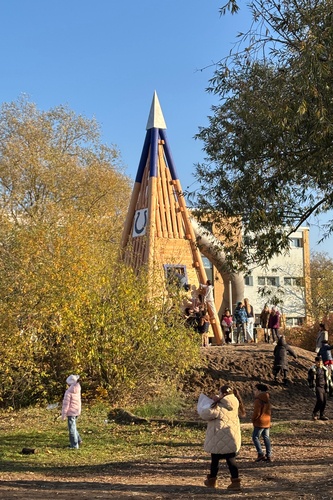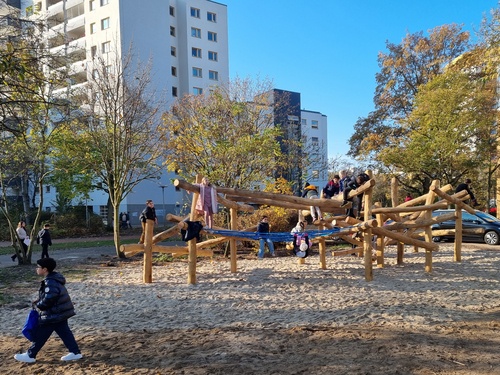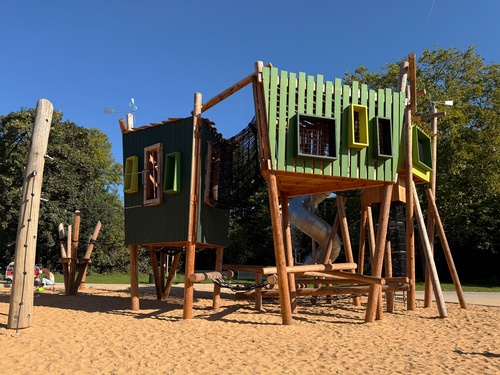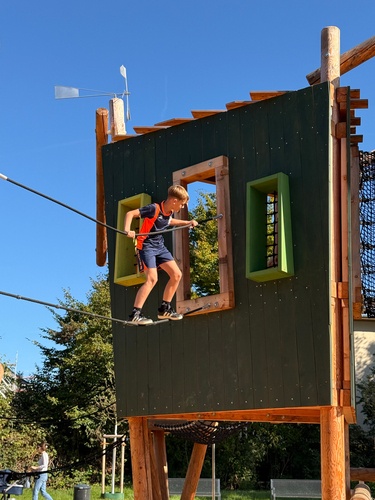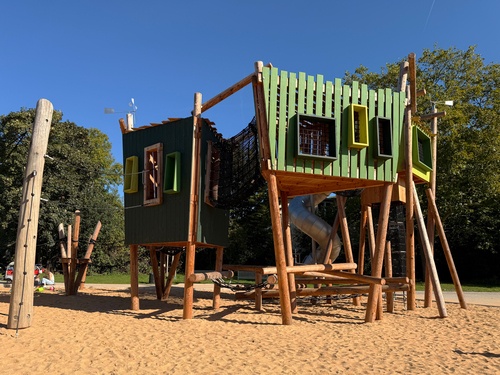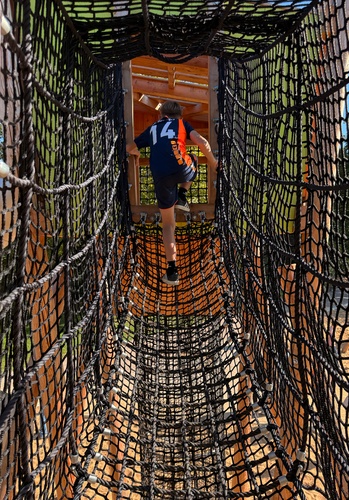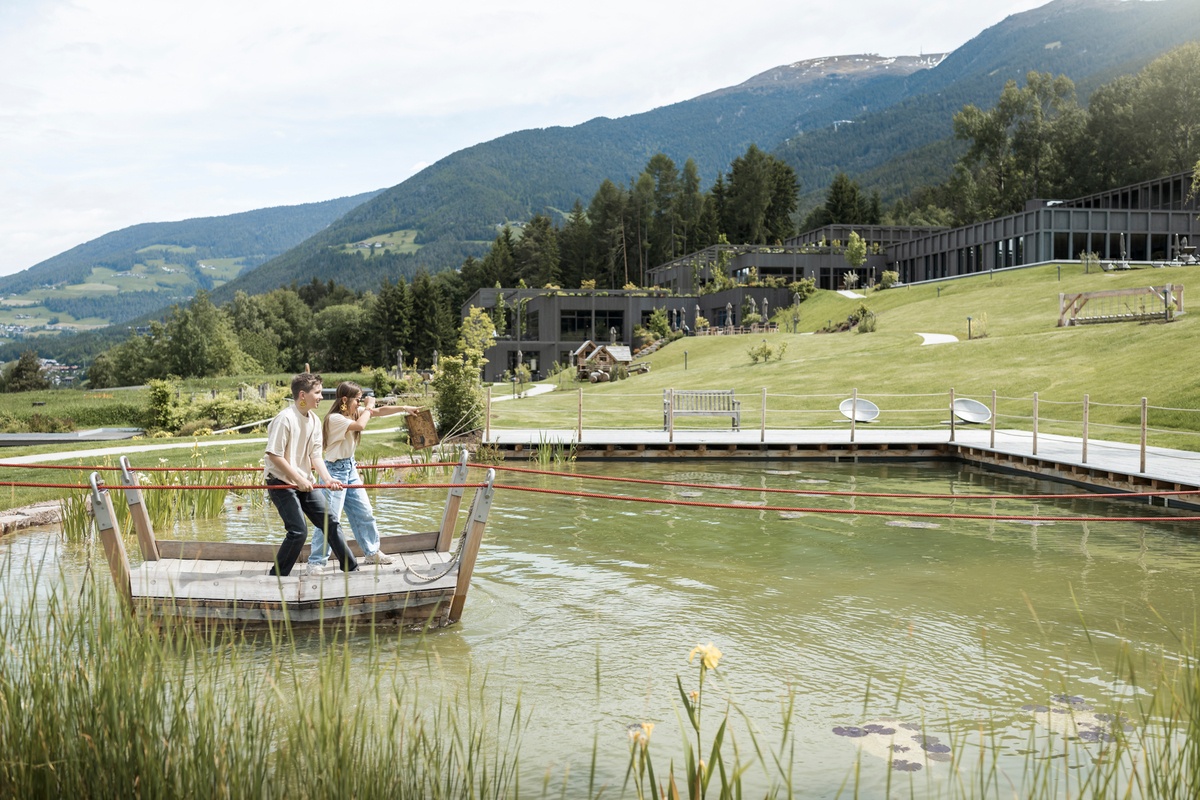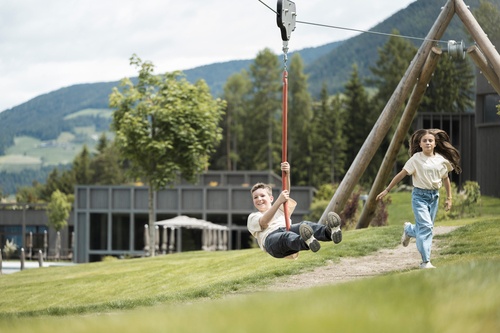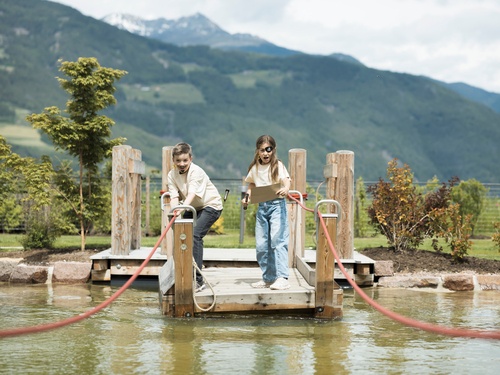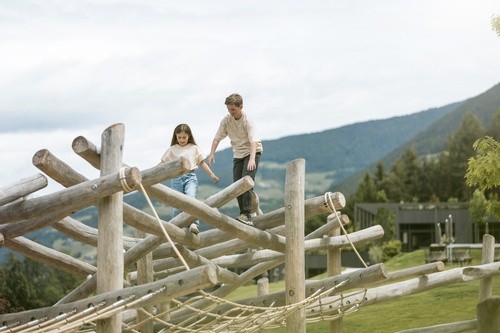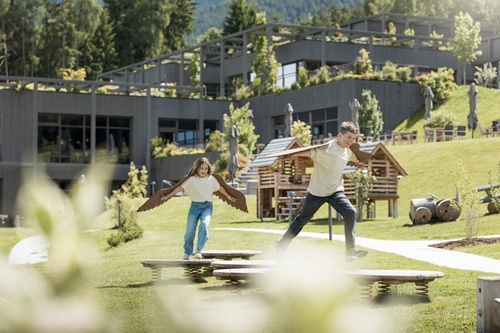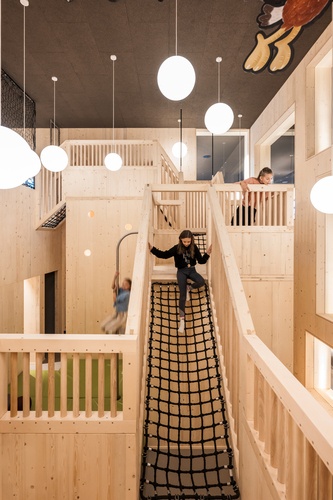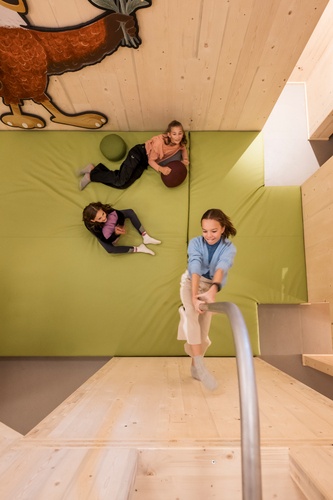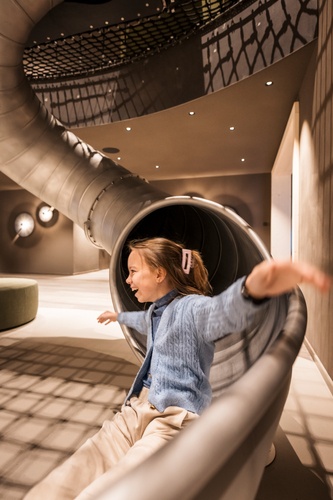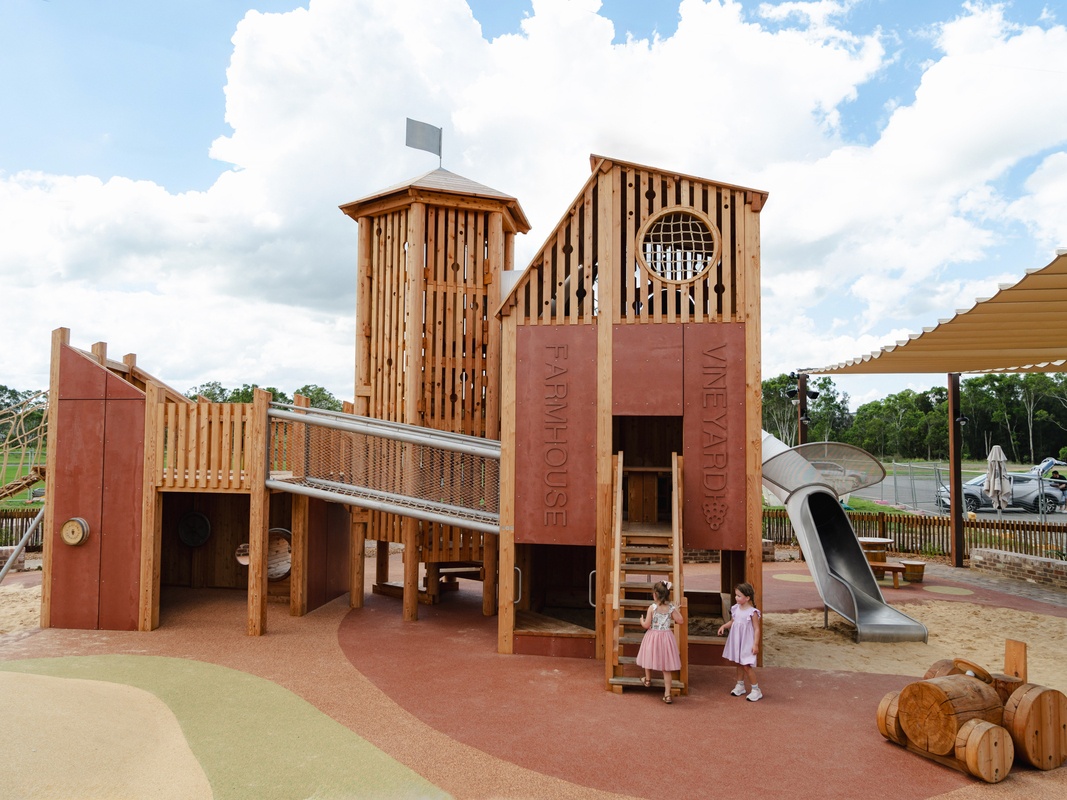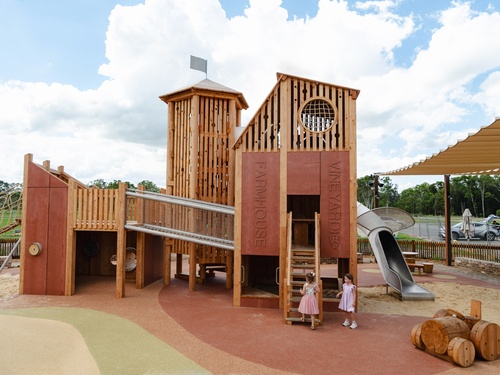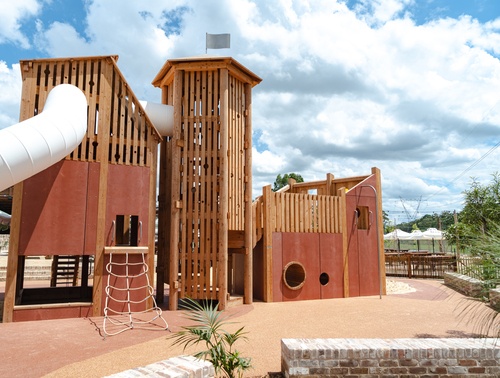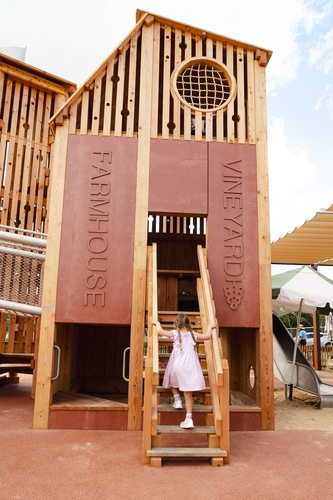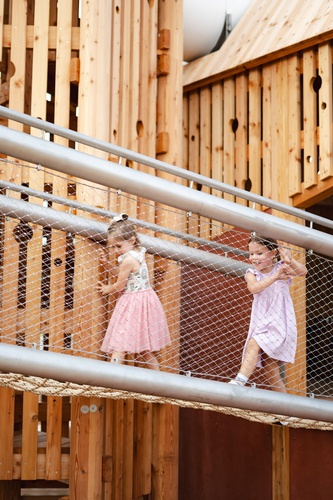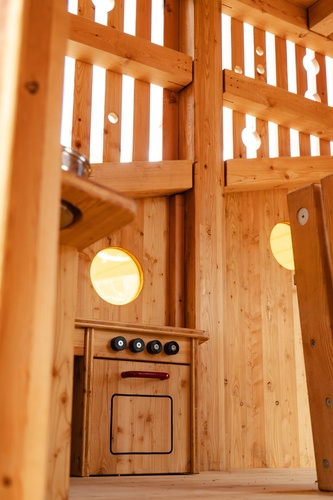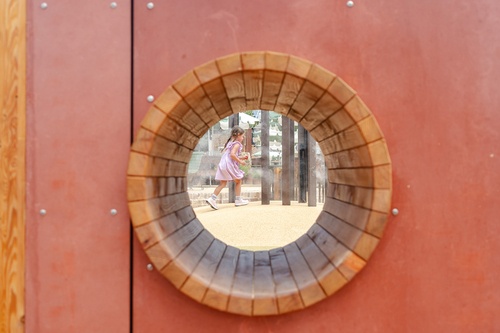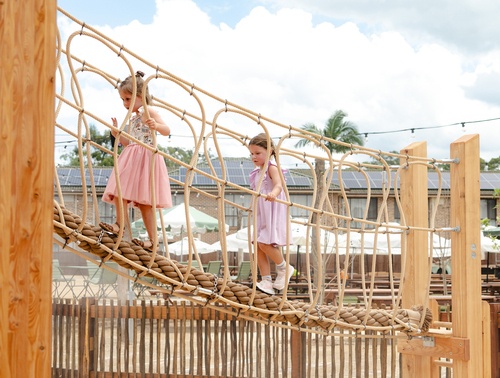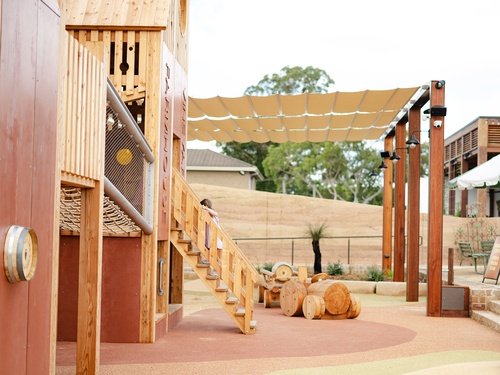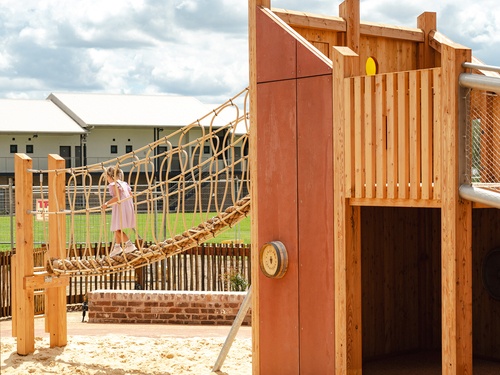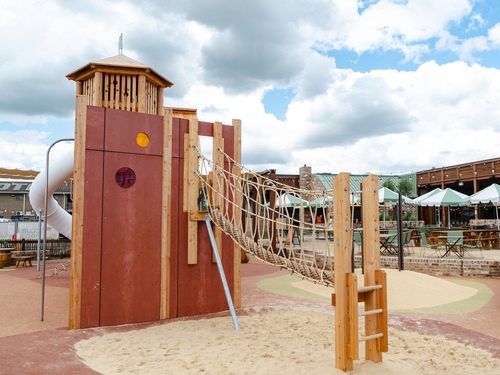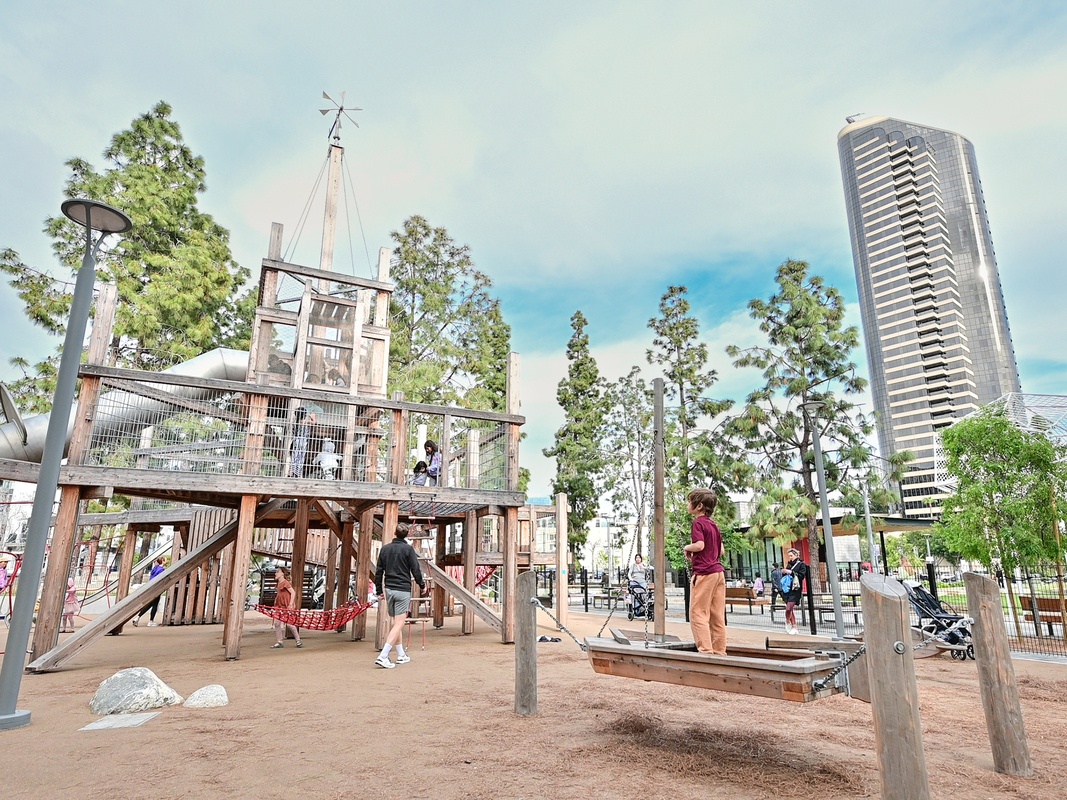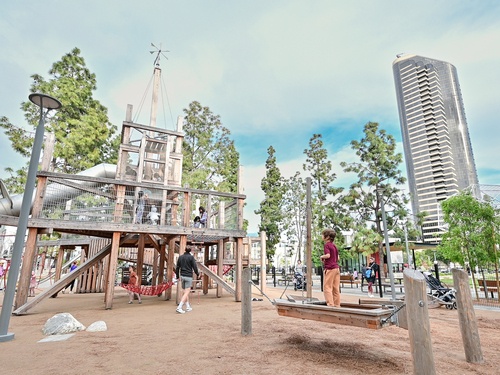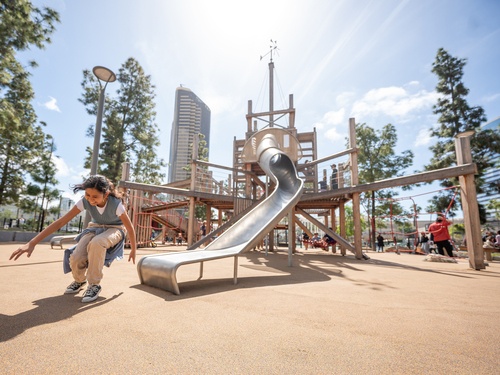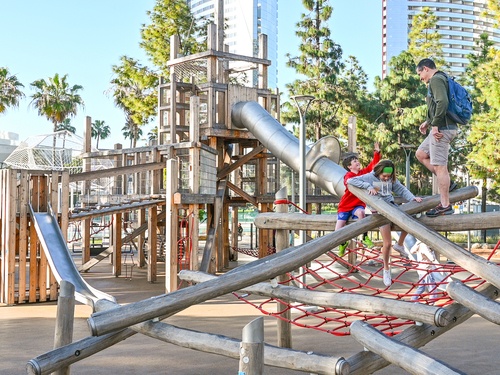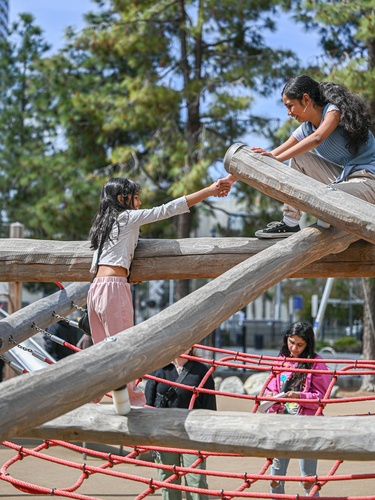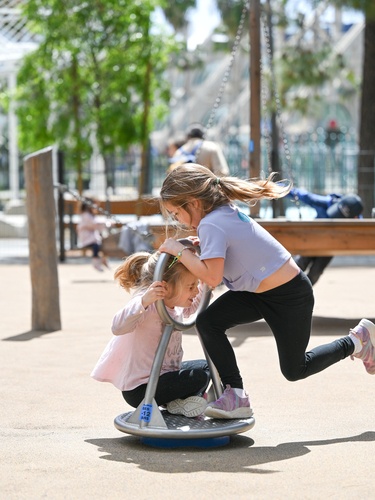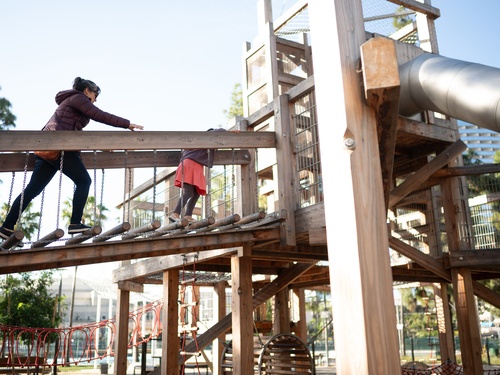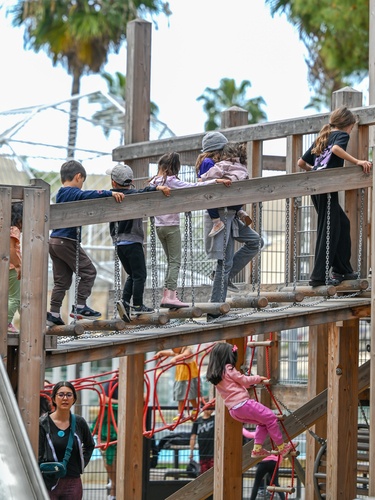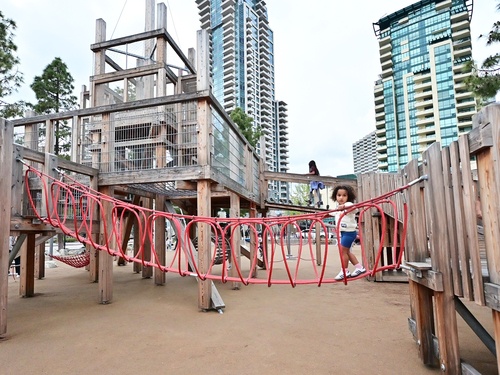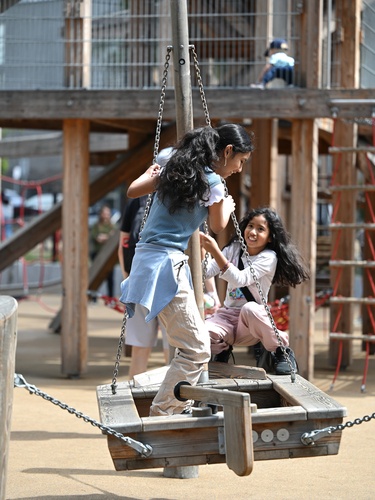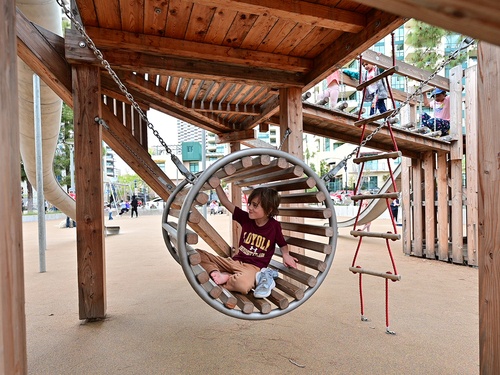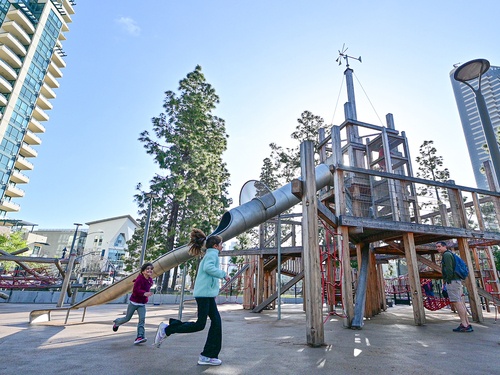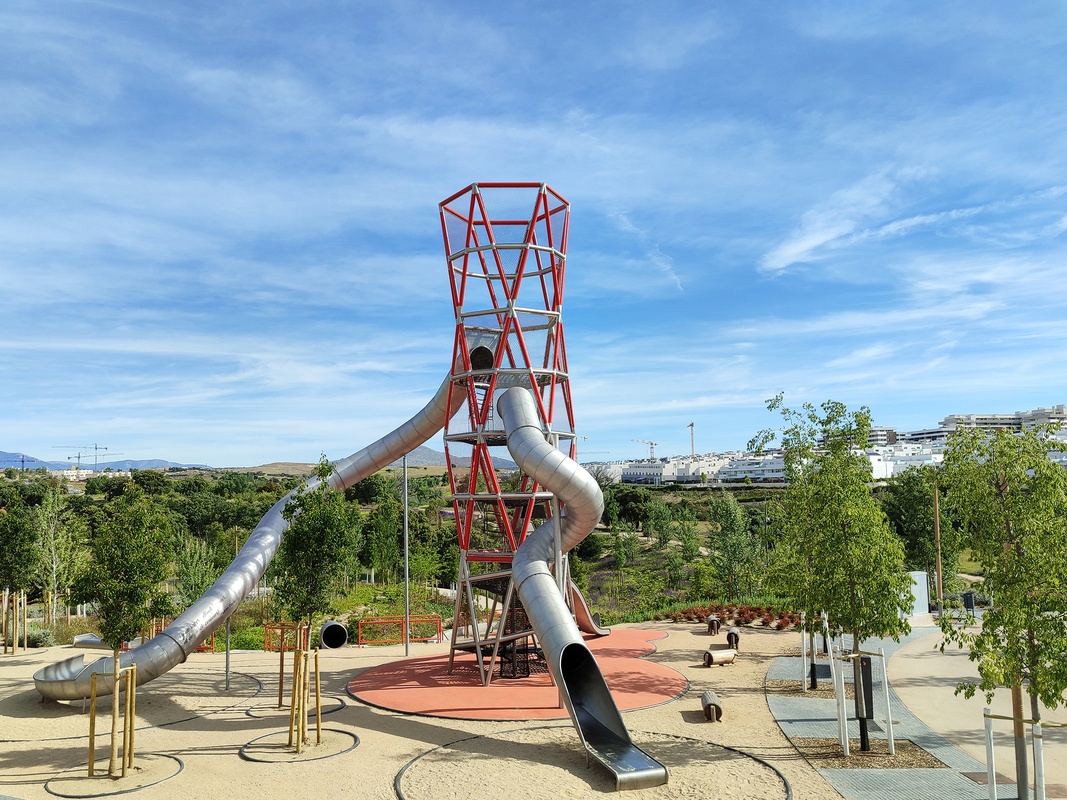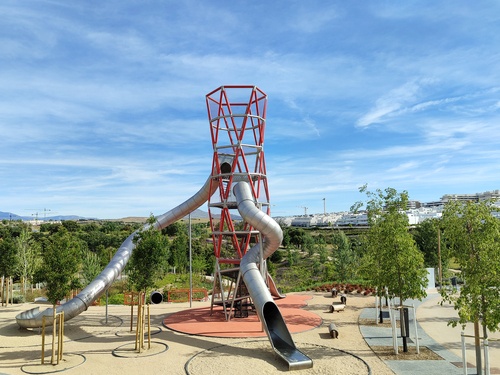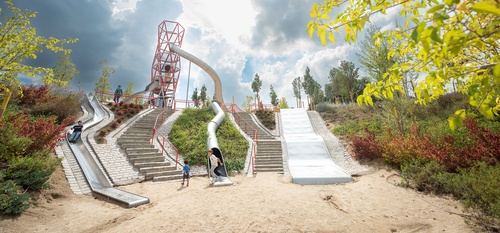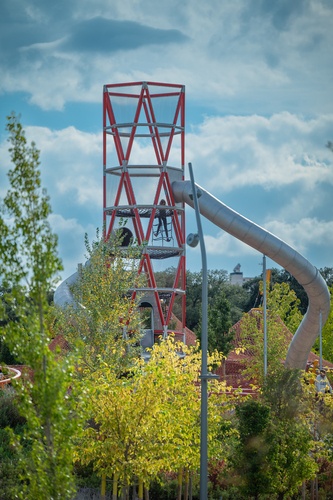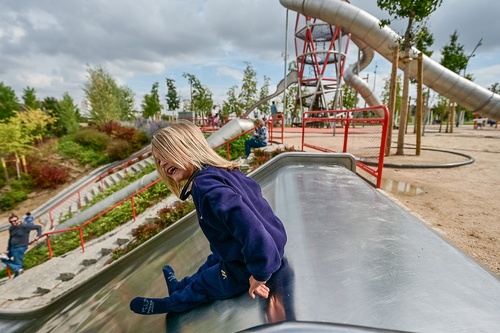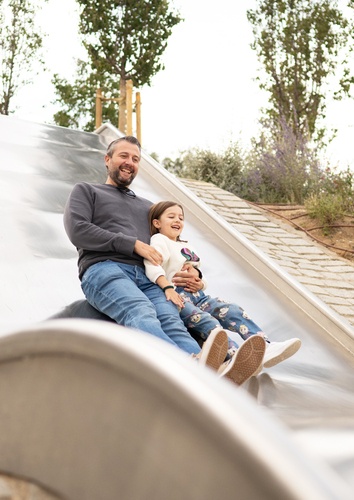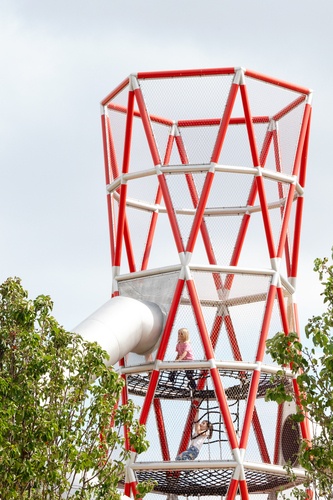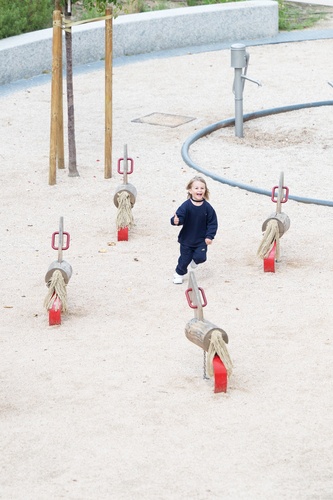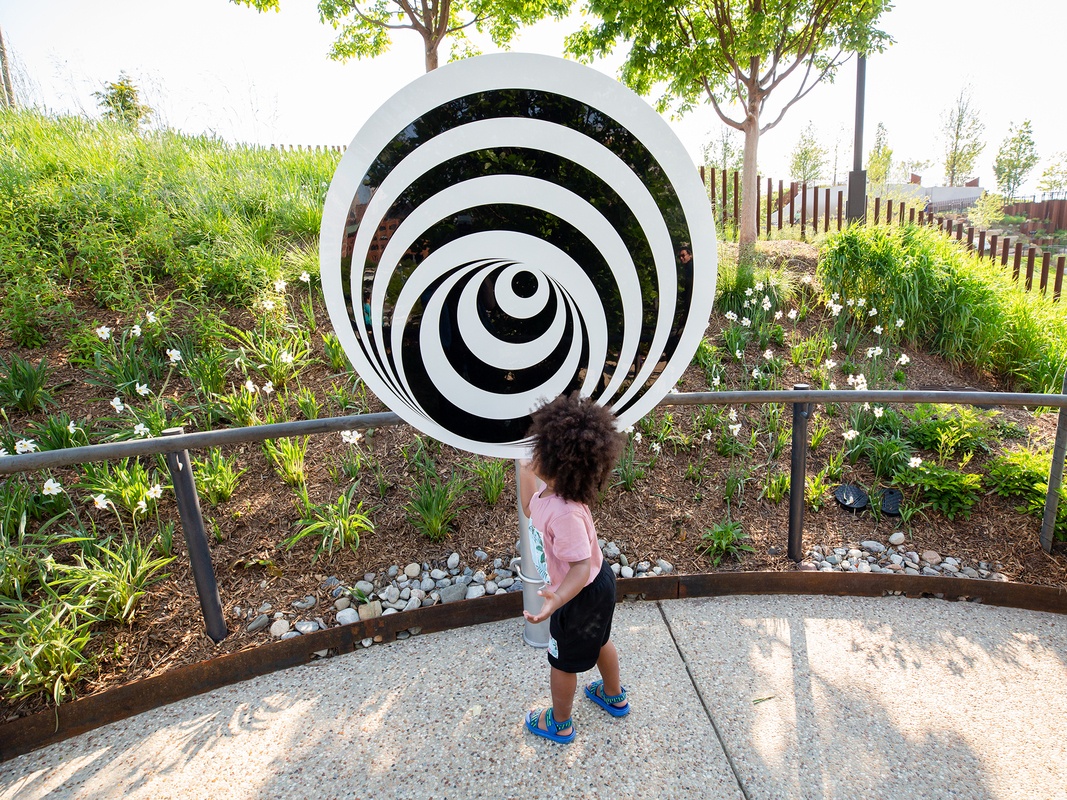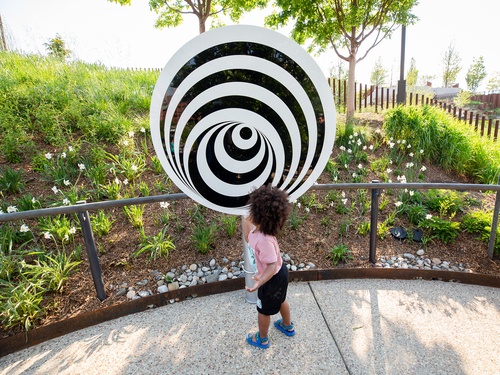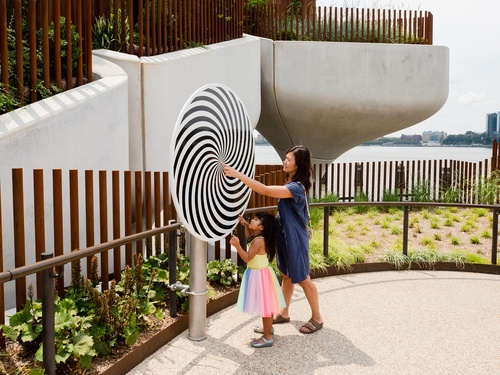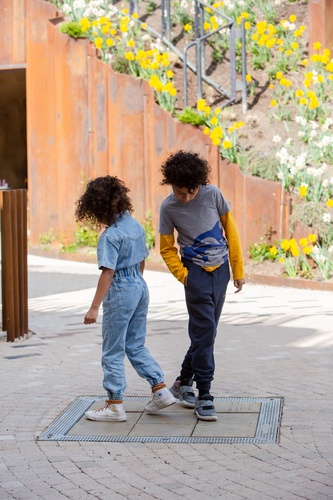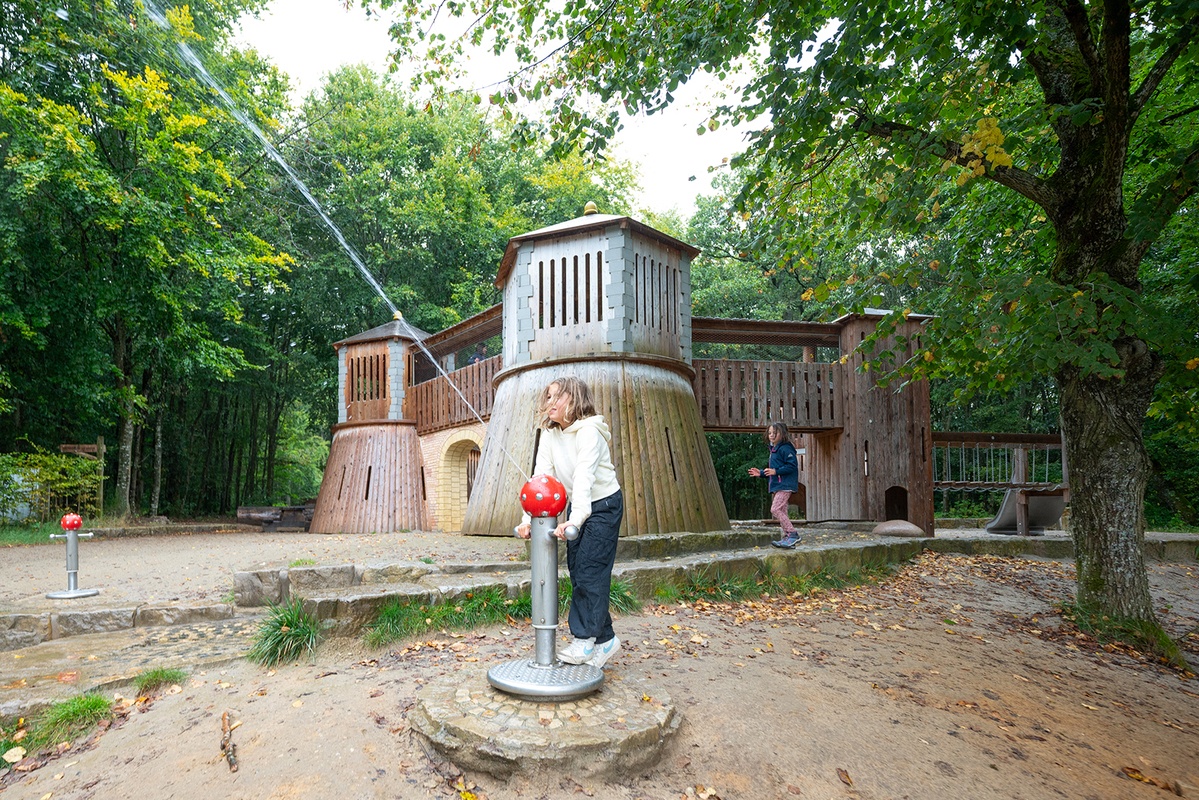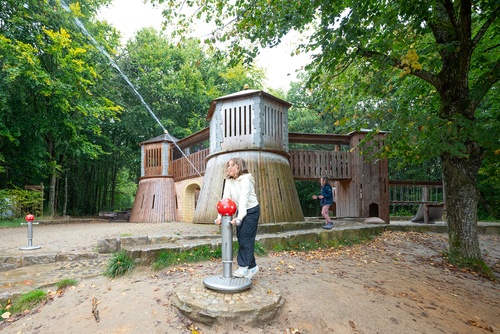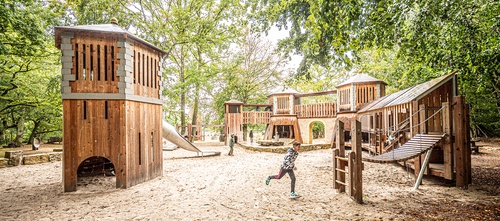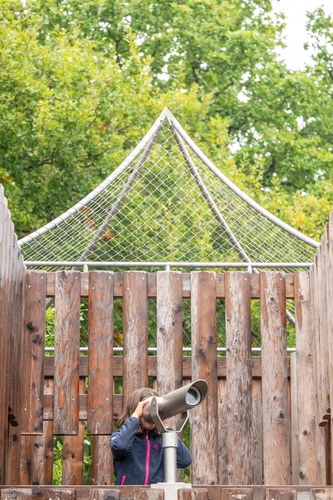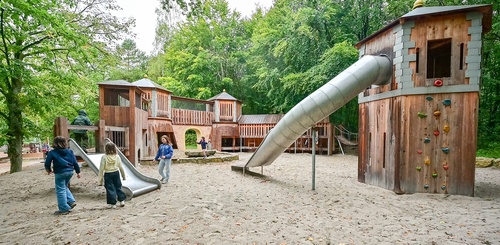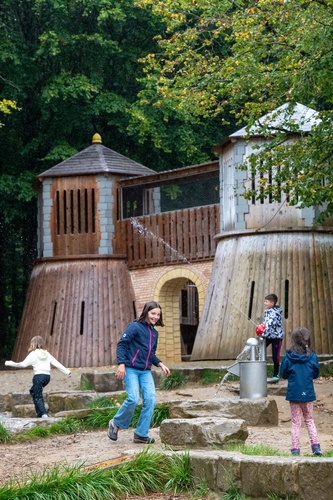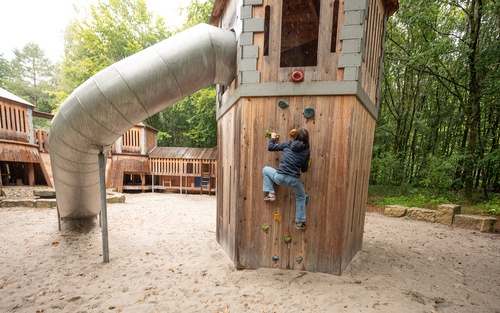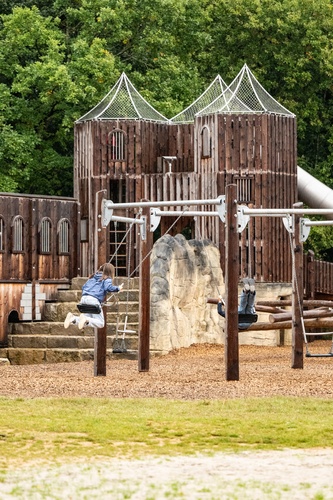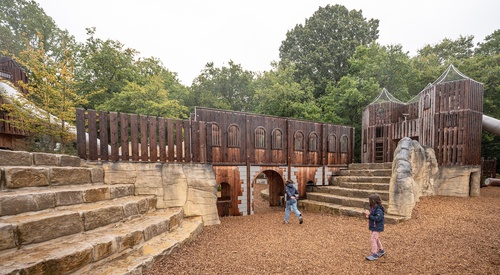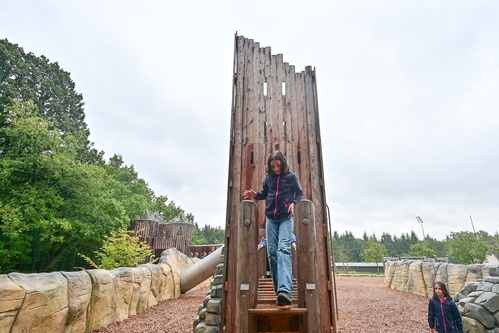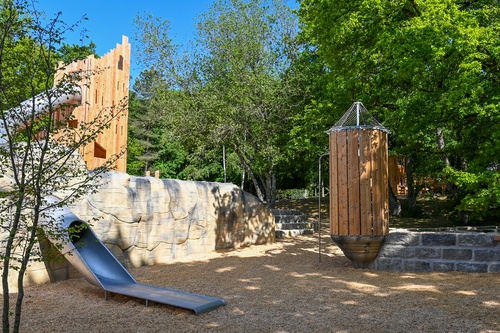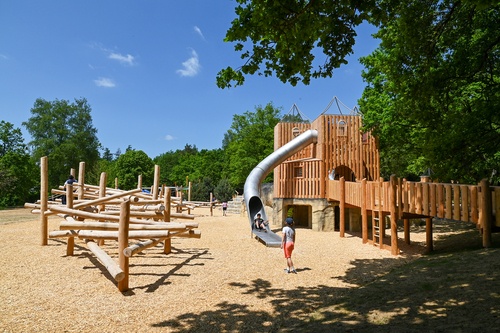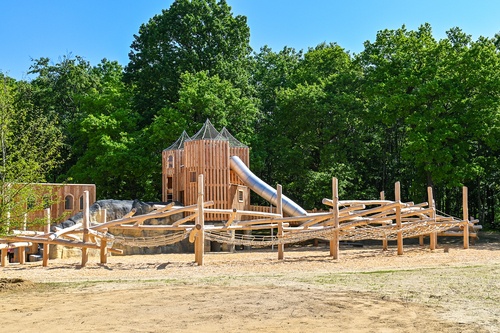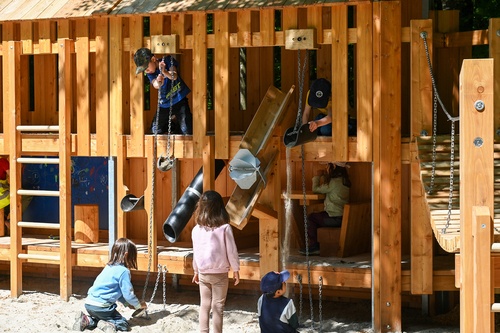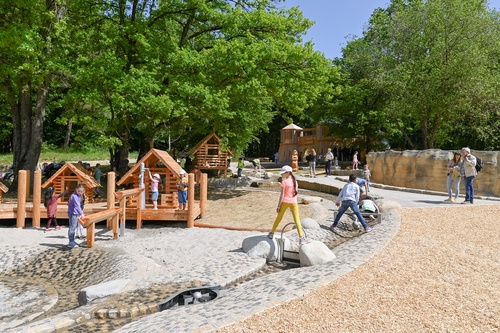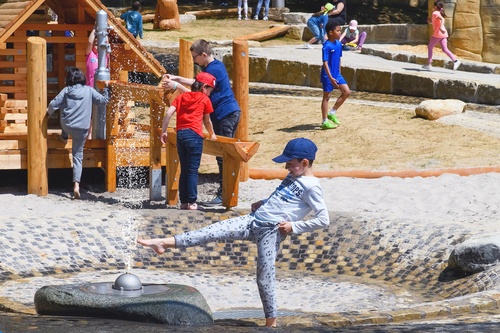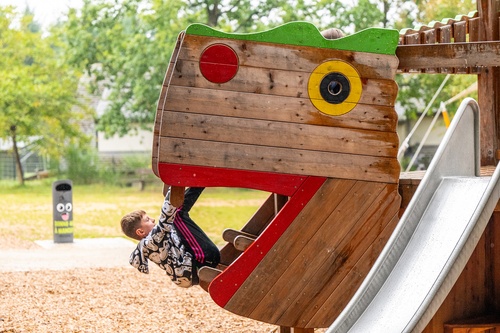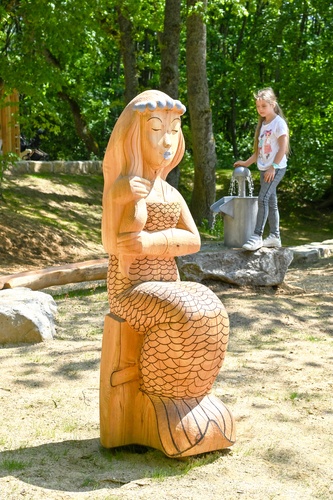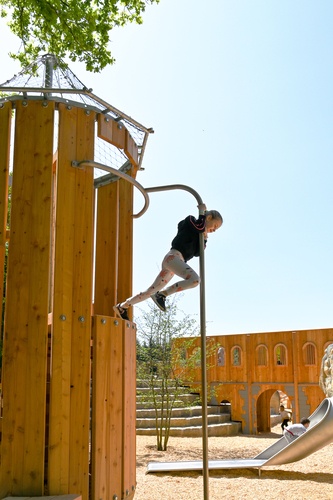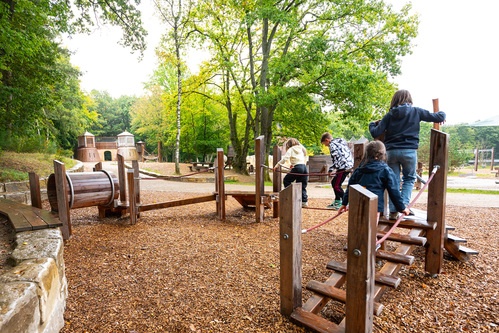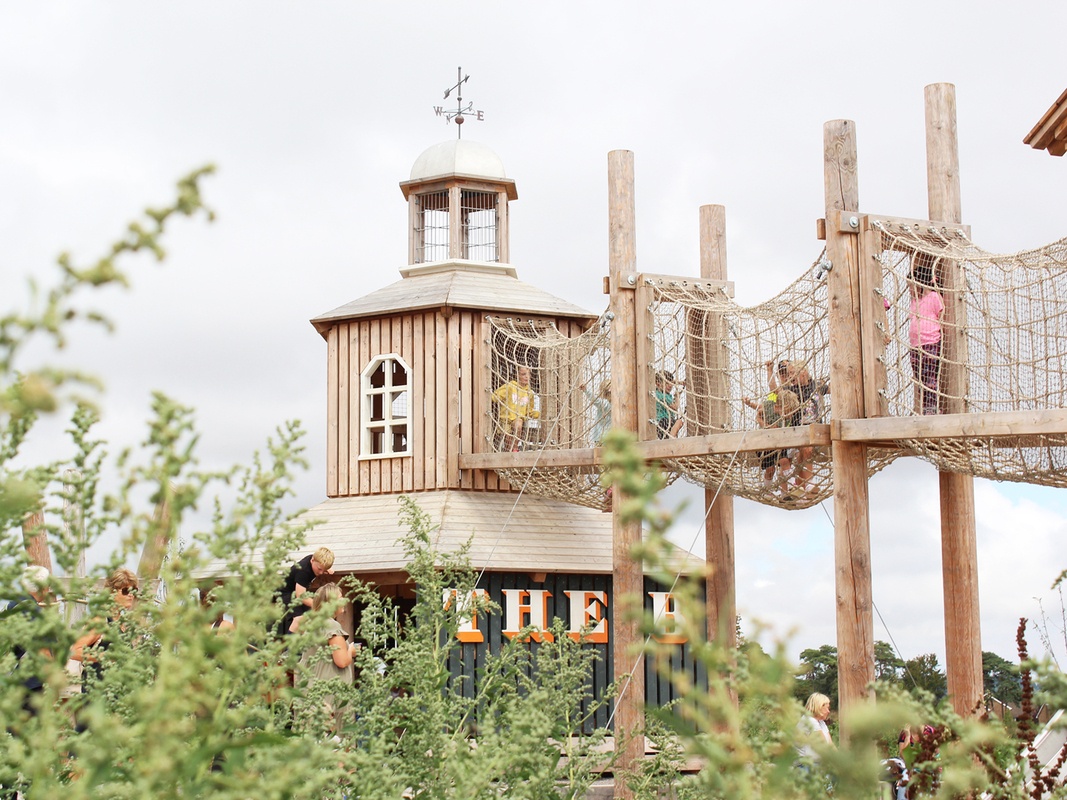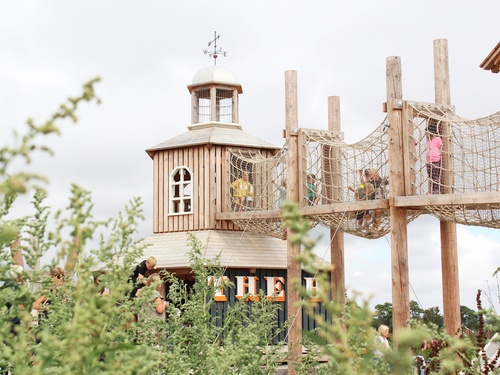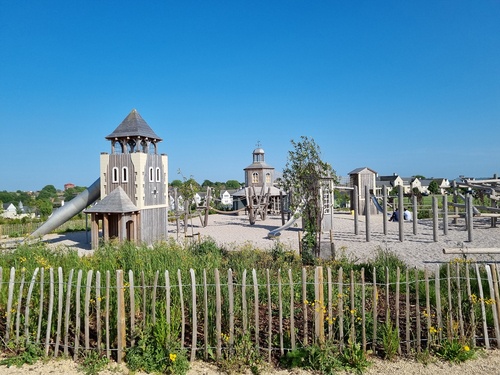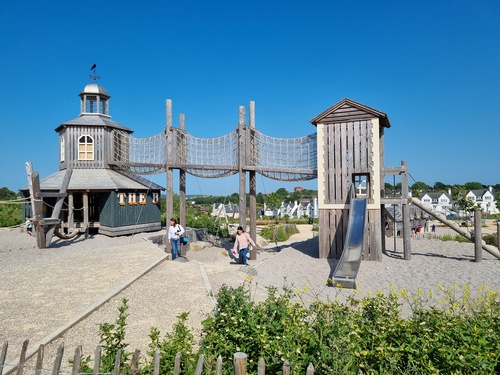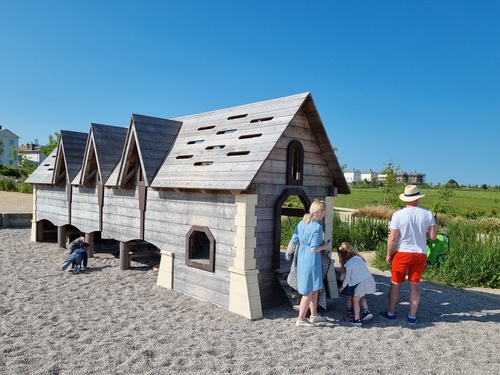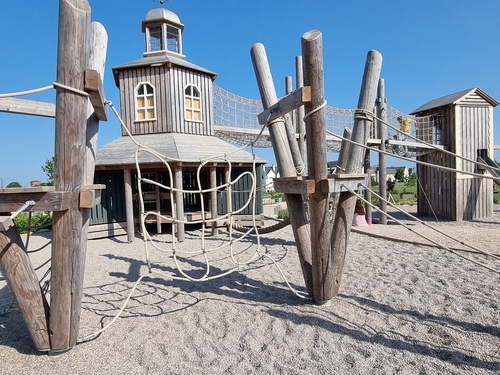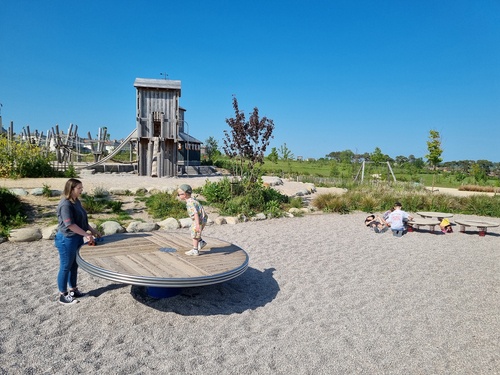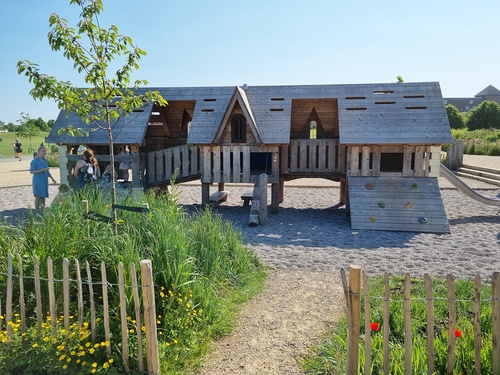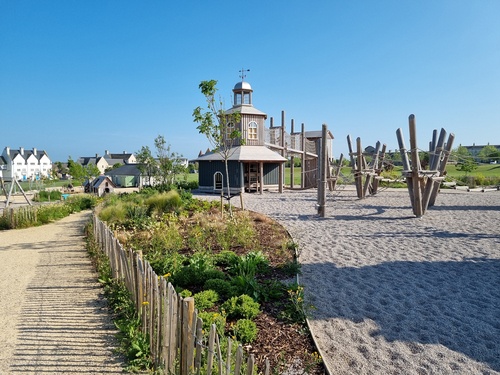The newly designed park has an eventful, sometimes dark history: for 150 years, the property was part of Spring Hill Plantation, in which enslaved African Americans were forced into labour. For the ensuing 160 years, it was home to North Carolina's first psychiatric hospital. The park's name giver, nurse and social reformer Dorothea Dix, founded a mental hospital on the site where mentally ill people were examined and observed. The methods used in those "examinations" at that time have left a bitter aftertaste that lingers to this day. The Gipson Play Plaza, named after the sponsoring family, is an impressive playground with various play areas full of exciting challenges for families. In the future, the focus will be on cheerful shouts and loud children's laughter – thus breaking with the once dark history of the place.
The centrepiece of the adventure playground consists of three large climbing towers interconnected by a large two-storey suspension bridge. The lower level can be reached via two ramps, making it accessible to people in wheelchairs or with walking aids, as well as families with prams. The play elements on the lower level are particularly suitable for younger children who do not yet dare to climb to the top. Exploring the upper levels of the tower via ladders, climbing nets and net tunnels is much more challenging and requires more courage and a good sense of balance. This is more appealing to older children and teenagers. From the various platforms, visitors can whizz back down again via several straight and winding tunnel slides. The climbing combination features various wind mills and a rotating double helix. In addition to the visual aspects, the installation of several wind turbines as a group makes various air flow conditions visible. They thus add to the experience of the element of air and allow the power of the wind to be recognised.
Located at the top of the adventure playground is Watermill Mountain, a spacious water play paradise with various channel and dam elements as well as Archimedes screws, inviting children of all ages to play with water. The mill house, modelled to resemble the historic Yates Mill in Raleigh, can be operated by children using belt drives, mill wheels, pumps, dams and lock gates. Here they can learn about the power of water in a playful way. Another highlight is the "Mill Race", a 25-metre-long watercourse along the footpath. From the pump at the source of the channel, small boats created by the children from leaves and branches can sail to the mud area, for example.
Below the Watermill Mountain watercourse, water and sand meet. Here, for example, children can bake small "sand cakes" or re-enact the activities of a construction site. Between massive stones from the region lies "Boulder Town", a village-like collection of small wooden playhouses that tower above the water and sand play area. These are also ideal for little adventures and a wide variety of role-playing games.
Nestled in the garden landscape, the "Sensory Maze" hedge labyrinth offers interactive components that appeal to all senses with various mirror installations and sound elements for playing, trying out and experiencing. A special experience within the labyrinth is the large walk-in kaleidoscope, which allows you to see yourself from all angles in multiple mirrors. The sound arch, a water vortex, the dance chimes integrated into the floor and the stroking stones provide additional exciting experiences. The barrier-free sensory maze (ADA-compliant, Americans with Disabilities Act) is designed for people of all ages and abilities. Here, they can try things out, play tag or hide and seek, and simply rediscover the maze again and again.
The "Swing Terrace" features an impressive 27-metre-long swing with various swing types, including a large rope swing that can be shared by up to three children at a time, as well as nest swings for young and old to relax in.
All in all, a spacious, fascinating and challenging play world has been created here, enabling inclusive play and bringing together all age groups.


